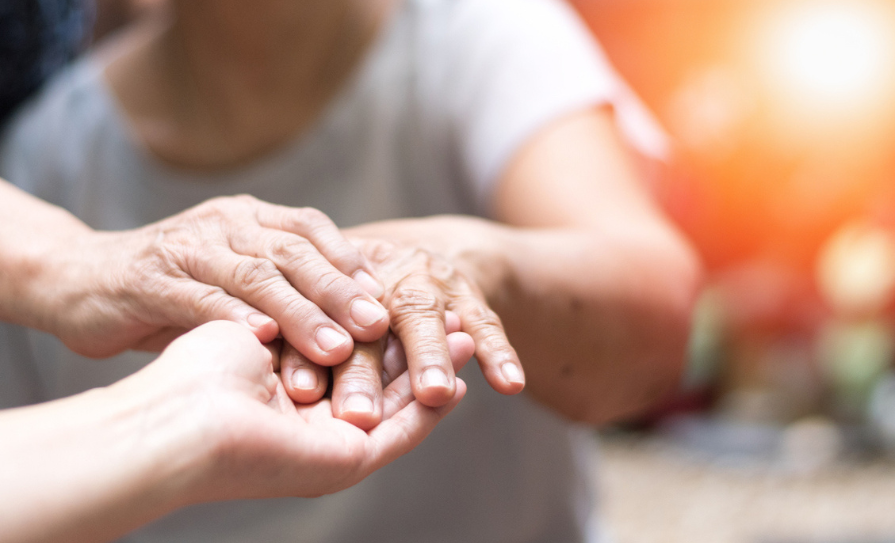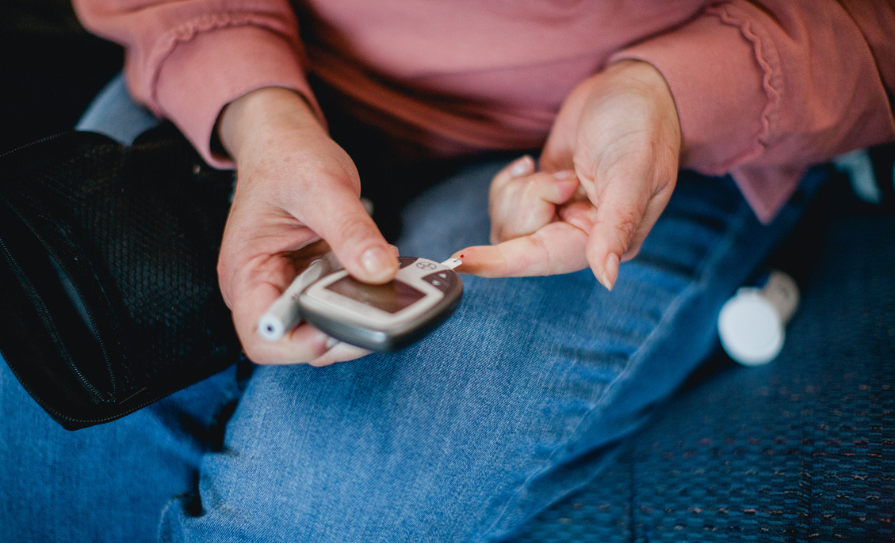Reference: May-Jun 2024 | Issue 3 | Vol 17 | 2024
Parkinson’s disease (PD) is a progressive neurological condition and the second most common neurodegenerative disorder after Alzheimer’s disease. Many experts believe we are facing a Parkinson’s pandemic due to the increase in ageing populations and rising numbers of diagnoses. Parkinson’s is now the fastest growing neurodegenerative disorder.1
In 2020 experts estimated that globally 9.4 million people are living with PD and its prevalence has doubled in the last 25 years. The rise in PD prevalence calls for attention to the increasing individual and societal burden and the pressing need for measures to address and impact this challenging disease.2
Myths about PD
There are many myths associated with PD, the most commonly reported including:
– It is the disease of an older person;
– Parkinson’s is just a tremor;
– Parkinson’s only affects movement;
– Everyone is affected the same way.
In Ireland it is estimated that 15,000-to-18,000 people are living with PD. A diagnosis is more commonly made in a person over the age of 65 years, however, there are approximately 1,800 people currently diagnosed with early or young onset Parkinson’s in Ireland. These patients range from 25-to-65 years-of-age. Juvenile Parkinson’s can affect any person under the age of 21. Parkinson’s affects slightly more men than women.
The exact cause of PD remains unknown. It is believed that a combination of age, genetics, and environmental factors play a role in the loss of the neurochemical dopamine at a faster rate than that seen during the natural ageing process. Dopamine is responsible for smooth movement and controlled movement, among many other functions. It also plays a role in sleep, motivation, cognition, and mood. Hence the potential symptoms some patients may experience.
Diagnosis and symptoms
There is no definitive blood test, investigation, or form of imaging that can exclusively confirm PD. Therefore, diagnosis is generally based on clinical assessment, history of symptoms including genetic history, a DaT scan (based on SPECT imaging to assess the loss of dopaminergic neurons in striatum), and response to medication prescribed.
Three initial symptoms are usually evident in a person with PD. Tremor, which is usually unilateral, is evident in around 70 per cent of cases, while 30 per cent of patients will not display the symptom. Bradykinesia – such as a change in the pace of walking for example – and rigidity – such as smaller amplitude in arm swing – are also often present. Some patients will experience symptoms for years before a diagnosis is made or medical assistance is sought. These are referred to as prodromal symptoms.
Patients living with PD may experience up to 40 potential symptoms that are both motor and non-motor related. Examples of motor issues include tremor, rigidity, facial masking, shuffle, and balance issues. Examples of non-motor issues include bowel and bladder issues, sleep disturbances, speech problems, hypotension, anxiety, apathy, and mild cognitive changes. In a Parkinson’s Ireland members study carried out in 2022, sleep disturbance was the most commonly reported issue, and was experienced by 70 per cent of participants, followed by motor speech/oral issues (58 per cent). Motor symptoms associated with PD are sometimes the tip of the iceberg; a kaleidoscope of symptoms may be experienced and the clinician must decipher if the issue is directly related to PD, the result of medication, or related to another health condition. It should not be assumed that all symptoms are directly attributable to PD and a thorough assessment is essential.
Parkinson’s treatment
There is no cure for PD, however, research is ongoing into potential disease modifying treatments that may delay its progression. Medication to manage symptoms may be prescribed by a physician and this can optimise symptom control and improve quality-of-life. Some advancements have been made in complex therapies such as drug device delivery systems and deep brain stimulation. These may be considered in advanced disease, when oral medication is no longer effectively managing symptoms.
Living effectively with PD requires not only taking medication, but also learning about the disease, the treatment, and the necessary tools. Increasing awareness and levels of knowledge encourages self-efficacy and self-management of a chronic illness to improve ownership of the condition and maintain person-centred care. The World Health Organisation describes self-management as a critical component of care delivery and notes that “ageing populations and the growing burden of non-communicable disease means that there is even greater demand for health services”.3
Live well with the ‘PD KEES’ toolkit
At Parkinson’s Ireland, we have developed the KEES toolkit to assist in self-management and efficacy when living with PD. The KEES toolkit encompasses the following vital aspects of PD management:
– Knowledge;
– Education on medication;
– Exercise;
– Supports.
Knowledge represents sharing information on Parkinson’s; what it is, who is affected, and how patients can live well with the disease. Providing patients with small amounts of applicable and appropriate information at a time, rather than an overwhelming volume at once, is important and promotes improved understanding.
Education about medication and treatment is also vital in order to optimise symptom control and improve adherence to prescribed medication. Patients should be advised regarding what the medication is, how it is expected to help, how long before improvements can be expected, and how best to take the medication. Four crucial aspects to optimise medication regimens are:
1. Promote consistent timing every day;
2. Advise whether the medication is to be taken with or without food;
3. Advise about the importance of avoiding constipation;
4. Encourage adequate hydration.
Medication alongside relaxation and distraction techniques are key pieces of the symptom management jigsaw. What works for one person may not work or be suitable for the next patient. Hence the need for a personalised and holistic approach and care plan.
Exercise is essential in the management of motor and non-motor symptoms. Physical benefits of exercise include improvements in balance, gait, rigidity/stiffness, and strength, while the psychological benefits include improved confidence, increased serotonin production, improved sleep and mood, and improved wellbeing. It is becoming increasingly evident that regular, high level exercise is associated with a slower deterioration in those with PD. This has been evaluated using several assessment tools.4 Further research is needed into the specific role of exercise and disease modification; however, it is recommended that aerobic exercise, seen as a medication, should be advised.5 A variation of exercise, to provide a challenge both physically and cognitively and at a level of high intensity, is recommended. It should be adapted to the individual’s level of ability and patients should enjoy the experience. Some exercises found to be beneficial include Tai Chi, dance, yoga, and aqua therapy.
Support is an essential component of the toolkit. A support network can come from peer support, families, and the wider circle of health professionals. Involving family members in care helps to ensure they too have an acceptable level of knowledge and understanding of the condition. Participating in research opportunities is a positive step and an opportunity to contribute to the future pathway of PD.
Conclusion
To conclude, a PD pandemic is evident. Projected numbers are expected to double by 2040 and PD is the fastest growing neurological disorder in the world. As our population continues to age, healthcare providers need to increase their awareness of this disease. PD presents difficulties for both patients and medical professionals for a variety of reasons, including accessibility of care, deficient clear diagnostic standards, a wide range of symptoms, an individual’s reaction to treatment, and variation of the disease’s progression. Each individual’s case should be treated accordingly, as advocated by Bloem et al,1 who state:
“Seven million people, seven million variants of PD. In everyone, the disease manifests itself differently.”
Parkinson’s Ireland is the national charity to support, educate, and connect those living with PD, their family members, and healthcare professionals. We provide services through our branch network of 15 local branches and also through our national office based in Dublin. Our branches are facilitated by our team of volunteers offering local classes and talks. The support line is available to anyone trying to navigate PD at any stage.
Parkinson’s Ireland provides a PD nurse specialist service which includes phone support, virtual meetings (one-to-one or group), and nationwide talks for members and healthcare professionals. In 2023, the PD nurse team established a ‘Newly diagnosed programme’, which takes place on Zoom over a period of four weeks and includes a follow-up with participants for up to 20 weeks. The structure of this programme is to educate and increase self-management and advocacy in a small group setting to assist those living well with PD. This course takes place quarterly and people can contact our national office to be placed on the waiting list. Our PD nurses also facilitate a nurse-led Zoom each Wednesday morning, covering all areas of PD and providing the opportunity for questions and answers for members. We also offer a call back service from our dietician for those with questions specific to diet.
Our national office provides core online classes which our members can avail of. These classes incorporate a range of self-management techniques and strategies, including mindfulness, psychological wellbeing, singing, yoga, and physiotherapy classes. Educational leaflets and booklets are available online or on request from our national office. At Parkinson’s Ireland, we currently receive no core funding from the Irish State, which means we rely heavily on fundraising and donations to ensure our services are maintained.
More information is available at www.parkinsons.ie or by contacting the national office by telephone on 1800 359 359.
References
1. Bloem BR, Okun MS, Klein C. Parkinson’s disease. Lancet. 2021;397(10291):2284-2303.
2. Maserejian N, Vinikoor-Imler L, Dilley A. Estimation of the 2020 global population of Parkinson’s disease.
Mov Disord. 2020; 35 (suppl1).
3. World Health Organisation. WHO global strategy on people-centred and integrated health services. Geneva: World Health Organisation; 2015. Available at: www. iris.who.int/handle/10665/155002.
4. Tsukita K, Sakamaki-Tsukita H, Takahashi R. Long-term effect of regular physical activity and exercise habits in patients with early Parkinson’s disease. Neurology. 2022;98(8):e859-e871.
5. Alberts JL, Rosenfeldt AB. The universal prescription for Parkinson’s disease: Exercise. J Parkinson’s Dis. 2020;10(s1):S21-S27.
6. Dorsey ER, Sherer T, Okun MS, Bloem BR. The emerging evidence of the Parkinson pandemic. J Parkinson’s Dis. 2018;8(s1):S3-S8.













Leave a Reply
You must be logged in to post a comment.